Ensuring a smooth and easy online registration process is no simple task.
If your business relies on people registering for your services, you know the importance of that process.
After all, it’s the gateway to experiencing your business, so the registration process itself should be a path without any bumps in the road.
How to accomplish that? We have some ideas that we’ll present to you in this article.
So let’s get going!
- Enable Registrations on Your Own Website
- Design User-Friendly Registration Forms
- Ask Only the Relevant Questions
- Offer Multiple Payment Options
- Make Group Registrations Possible
- Allow Registrations on Mobile Devices
- Automate Communication With Registrants
- Conclusion
Enable Registrations on Your Own Website
One of the first things you should do to improve your online registration process is to provide customers with everything they need on one website.
That way, the complete experience of learning about your product or service, registering for it, and paying will be seamless and enjoyable for the consumers.
For providing an experience like that, it’s a must that you enable registrations on your own website.
That means not redirecting your customers to another website just to fill out a form.
In addition to being more of a time-waster, a practice like that can raise suspicion and mistrust.
That’s no wonder because customers are increasingly aware of malicious threats, and redirecting gives hackers a window of opportunity to steal their personal information.
Therefore, offering registrations on your website is the most convenient and safest way to improve the process.
For instance, Camp Tecumseh enables applicants to register for their camp programs directly on their website.
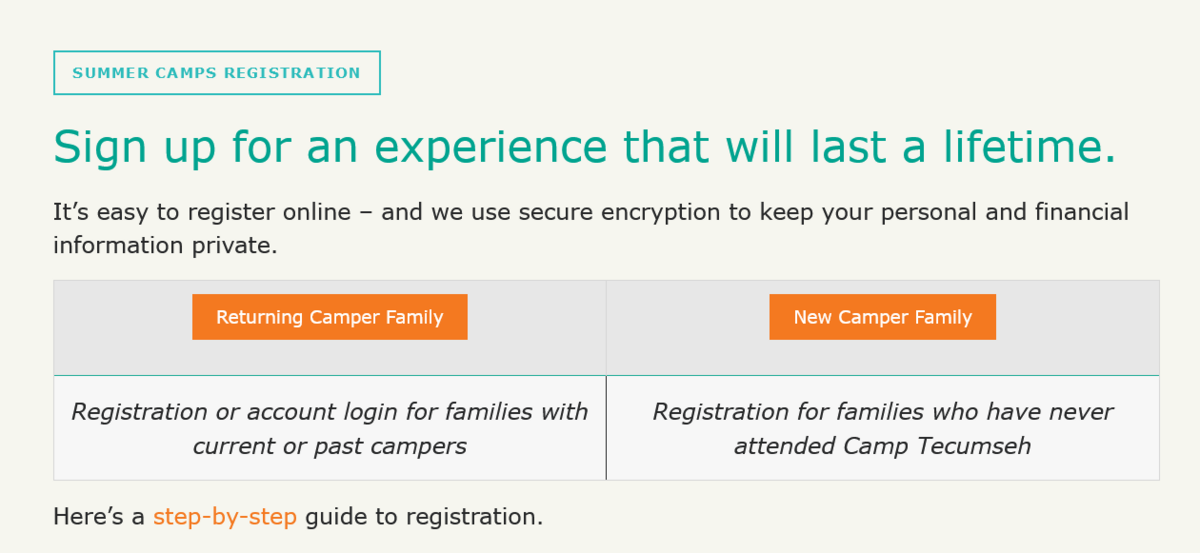
Source: Camp Tecumseh
After the interested campers choose a program they want to register for, they can register on the same website.
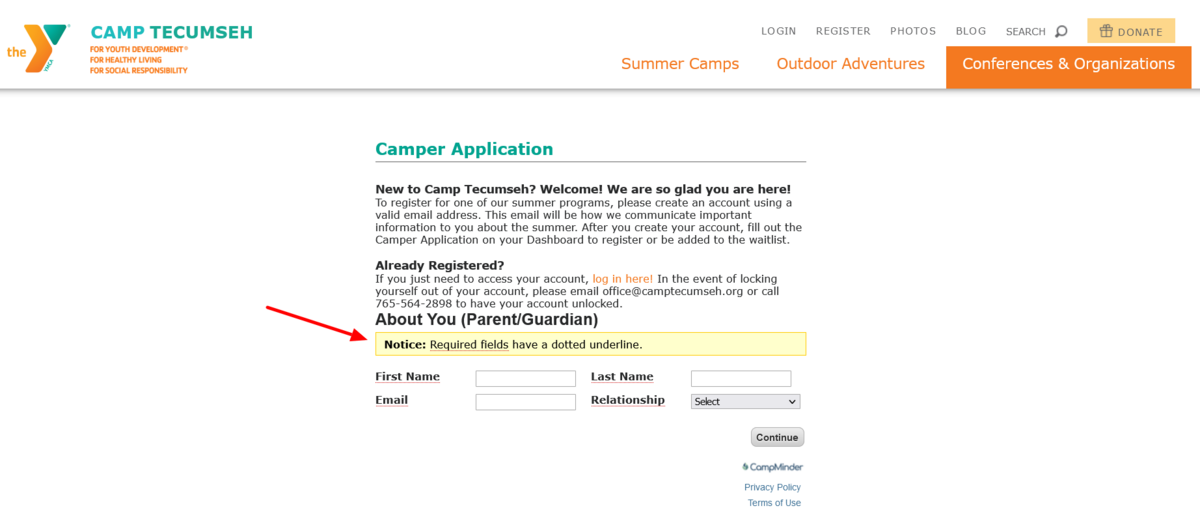
Source: Camp Tecumseh
That way, there is no confusion, and the process is fast and secure.
You can easily enable registration on your website with online registration software like Regpack.
Regpack allows you to embed a registration form by using a small piece of HTML code. It doesn’t get more convenient than that.

Source: Regpack
It goes without saying that you can customize your registration forms to fit your brand and your needs and collect the data you want from your applicants.
Allowing customers to register on your website is essential. Simply put, it’s better in every way than redirecting them to a different web address.
Design User-Friendly Registration Forms
As we’ve mentioned earlier, if you want to improve your online registration process, make it as effortless as possible. Registration forms play a big part in that.
There’s more to quality registration forms than making sure that they are on your website and that the users don’t have to be redirected elsewhere to fill them in.
You should also pay attention to how user-friendly they are.
First of all, you shouldn’t ask users for too much information, but we’ll talk more about that in the following section.
Depending on the products, services, programs, or activities you offer, you will inevitably have to ask for some details you need. However, the user-friendliness depends on how you do it.
For example, according to Corey Wainwright, a content marketer at HubSpot, you should ask for information in logical order.
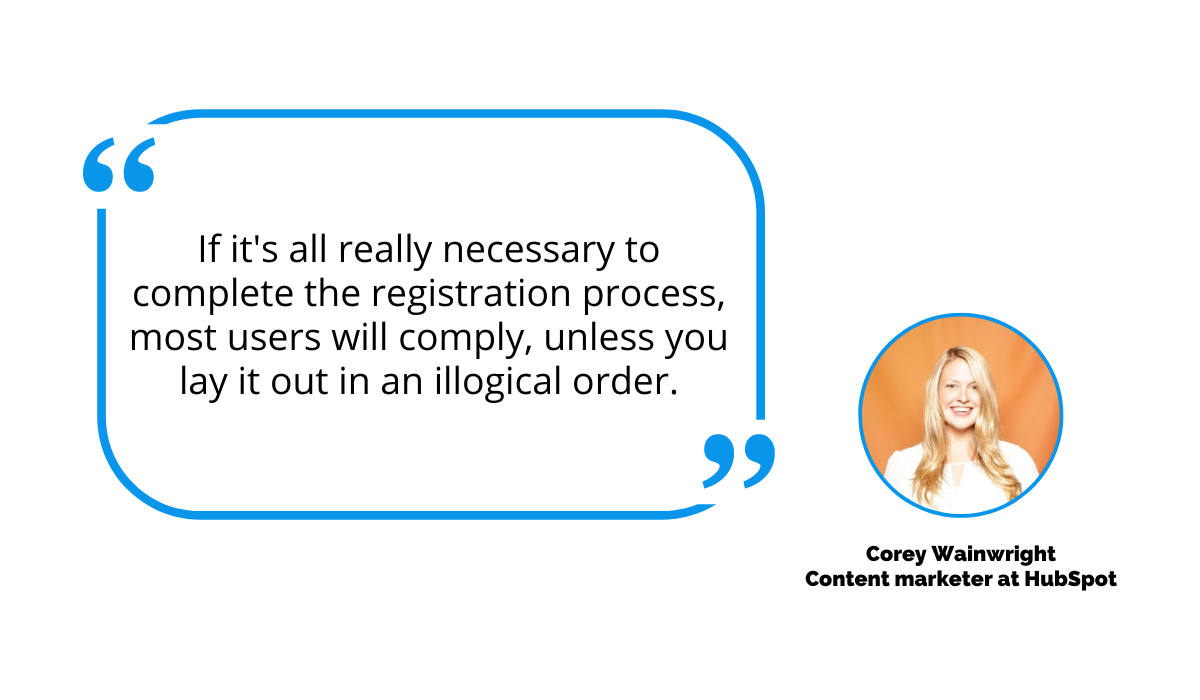
Illustration: Regpack / Data: Hubspot
What does that mean?
Well, for example, most registration forms start with fields for the name, contact information, address, credit card information, etc.
Users are used to a flow like that, so if you ask them to fill out a form that asks for, for instance, address, credit card number, name, and contact information, they might get confused and irritated.
You can easily ensure that the registration form flow is user-friendly by creating it with an online registration software solution that allows you to customize forms and even create them with a drag-and-drop method.
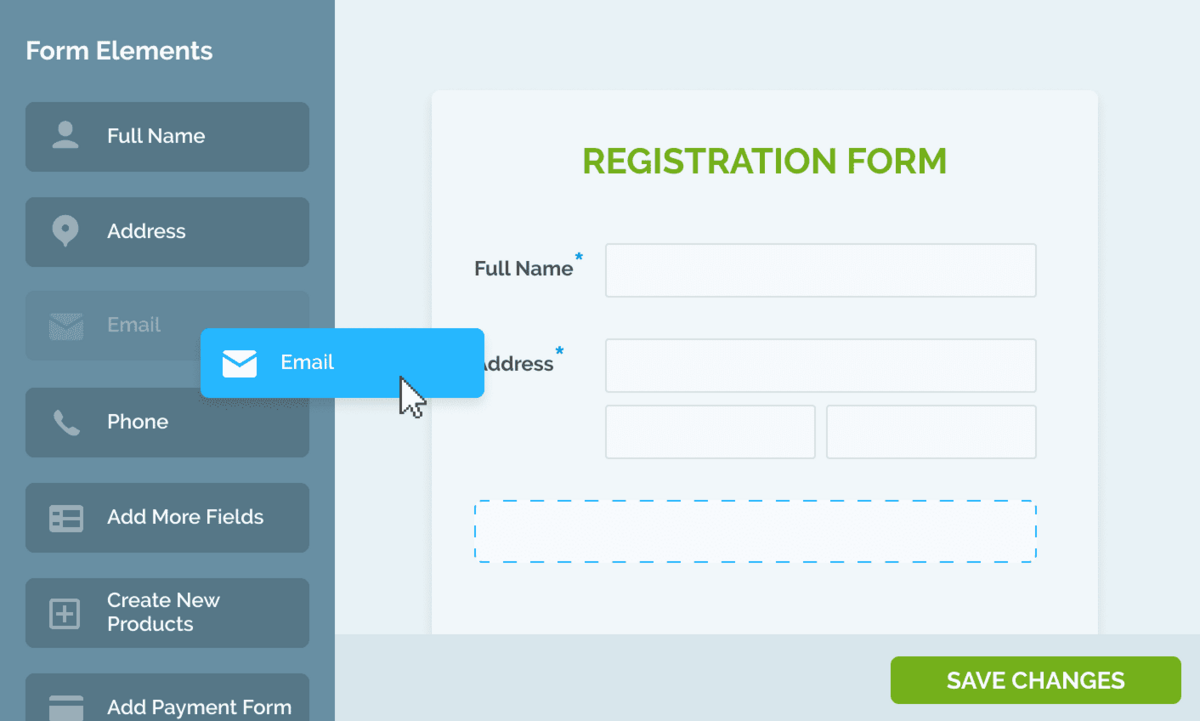
Source: Regpack
That way, you can arrange fields in any order you like to maximize the user-friendliness of your registration process.
Ask Only the Relevant Questions
You’d be hard-pressed to find someone who thinks filling out registration forms is a fun and enjoyable way to spend time.
However, it is necessary as a part of the registration process.
Since answering questions in a form isn’t an activity anyone looks forward to, you should make it as quick and hassle-free as possible.
You can do that by asking only the necessary questions and cutting out the ones you don’t need and which only make the registration process more complicated and lengthy.
For example, the data from HubSpot shows that an average web form only has a small number of fields.

Illustration: Regpack / Data: HubSpot
Of course, how many fields you have in your registration form depends on the type of business you have and the services you offer.
However, in most cases, it is enough that you ask only for basic information in the registration stage, like:
- Name
- Email address
- Phone number
- Address
- Organization
The rest of the questions are specific to what the applicants are registering for.
For instance, if you run a camp, you should ask for dietary restrictions or illnesses that campers have for security reasons.
However, you don’t need to ask for the place of birth, favorite animal, social security number, or any other information that isn’t crucial for the registration.
That’s easy if you use online registration software that employs conditional logic during the registration process.
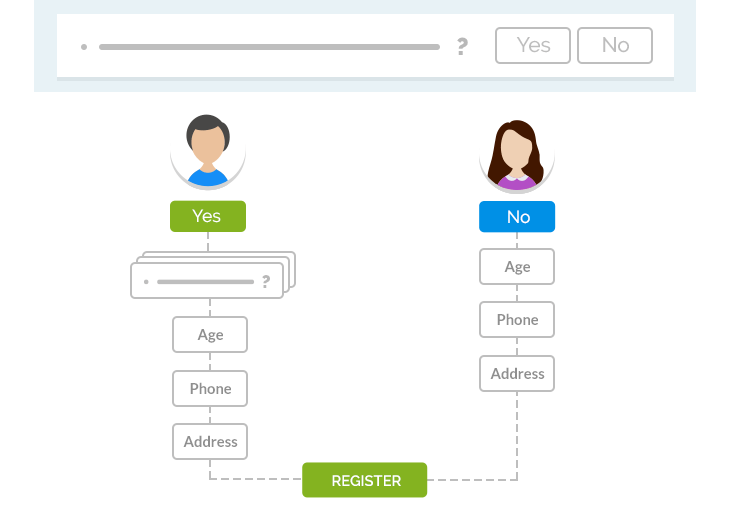
Source: Regpack
Conditional logic creates a registration flow based on the applicants’ answers.
That means the software can avoid asking some questions if they don’t apply to the applicant’s situation, and the software can figure that out from the previous answers.
That can save time for applicants and create a more streamlined registration process.
Offer Multiple Payment Options
Another way to improve your online registration process is to make it more flexible. One way of doing that is by offering various ways for your customers to pay.
The reason this is so important is that multiple payment options mean your customers will be able to get through the registration process easier.
Simply put, the more choice you give them, the higher the chances that one of those choices will be their preferred one.
And when they have their preferred payment option available, they’ll have one less reason to abandon the registration process.
For example, according to data from the Baymard Institute, it’s not unlikely that customers leave the payment process because there aren’t enough payment methods—9% of them will do that.
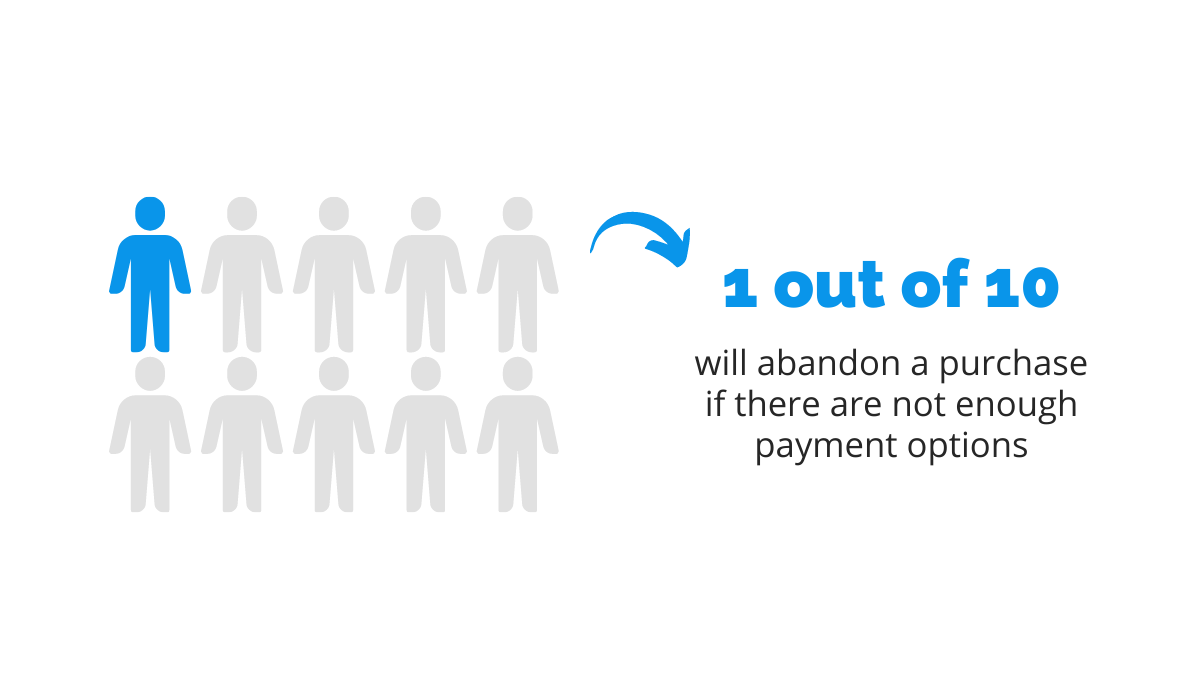
Illustration: Regpack / Data: Baymard Institute
Therefore, the more payment options you offer your applicants, the fewer of them you’ll lose during the process.
For instance, you can take a leaf out of Amazon’s book when it comes to providing flexible payment options.
They offer various ways to pay for products on their website, including credit and debit cards, Affirm, Venmo, and store cards.
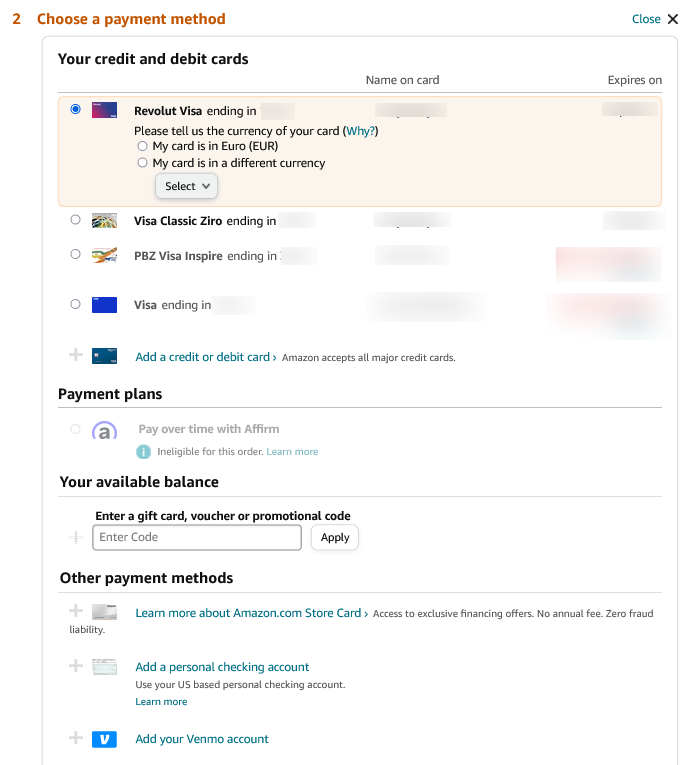
Source: Amazon
You might not be running an online store, but the point remains the same.
Multiple payment options give more flexibility and choice to your customers, leading to a better experience of the registration process, which can lead to more registrations overall.
Make Group Registrations Possible
In the previous section, we’ve explained how important it is to simplify the registration process. Enabling group registrations is a step further in that direction.
Let’s first clarify what we mean by group registrations.
In short, that means one person can register multiple people.
In other words, with group registrations, not every person needs to register personally. That saves time and makes the registration process simple and straightforward.
Here’s how Ragini Goenka, a business development manager at event management platform Eventdex, explains the benefits of group registrations:
Instead of asking the same questions time and again, the group registration feature allows you to remove redundancy and get the correct information in one go.
Therefore, group registrations are ideal if you offer any kind of group activity or a program.
Entire company departments can register for a conference in one go, entire classes can register for a sports camp at once, etc.
Using an online registration software solution with a group registration feature is a convenient way to offer that possibility.
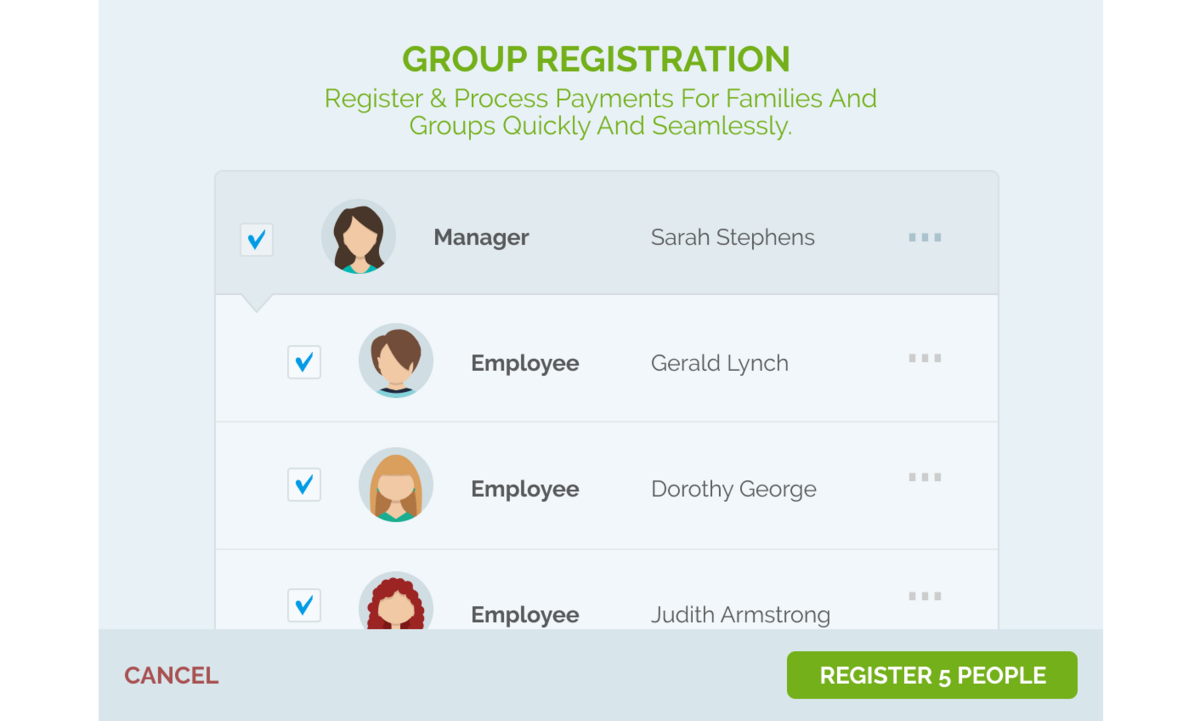
Source: Regpack
The way it usually works is that one person has permission to add additional people and fill in only the information specific to each person.
Such an approach saves time because it isn’t necessary to fill in every single detail about every applicant, only the data that differs from person to person.
That makes group registrations a great way to improve any online registration process.
Allow Registrations on Mobile Devices
Mobile devices are inescapable in today’s day and age. If you want to improve your online registration process, you shouldn’t ignore the impact they have.
Basically, everyone uses a mobile device, so online registration on such devices should be simple and straightforward.
Furthermore, the amount of data in online forms submitted via mobile devices is approaching 50% percent of total form data, according to WPForms.
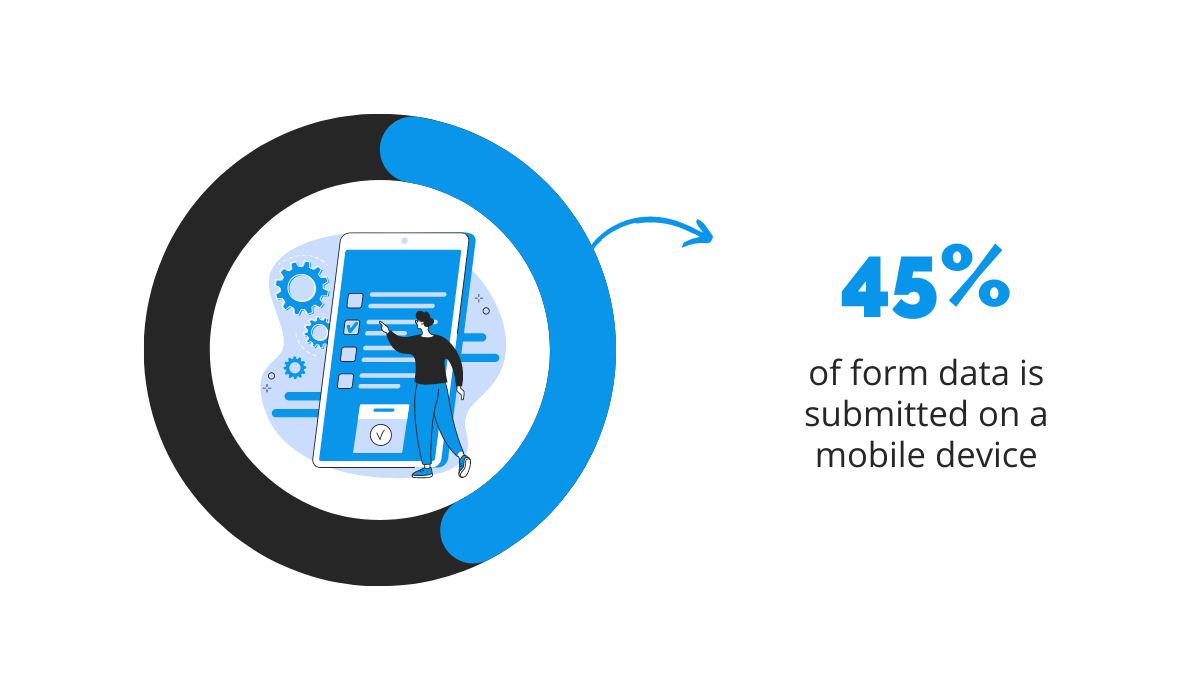
Illustration: Regpack / Data: WPForms
Simply put, there’s no escaping the reality that you should allow registrations on mobile devices if you want to keep up with the demand and improve your registration process.
However, it isn’t simply an act of allowing registrations—you need to optimize your registration forms for mobile devices.
That means adjusting your forms’ design, spacing, fonts, and other elements to be readable and responsive.
For instance, Entrio, an event management platform, optimized its registration forms to look simple and clean on a mobile screen.
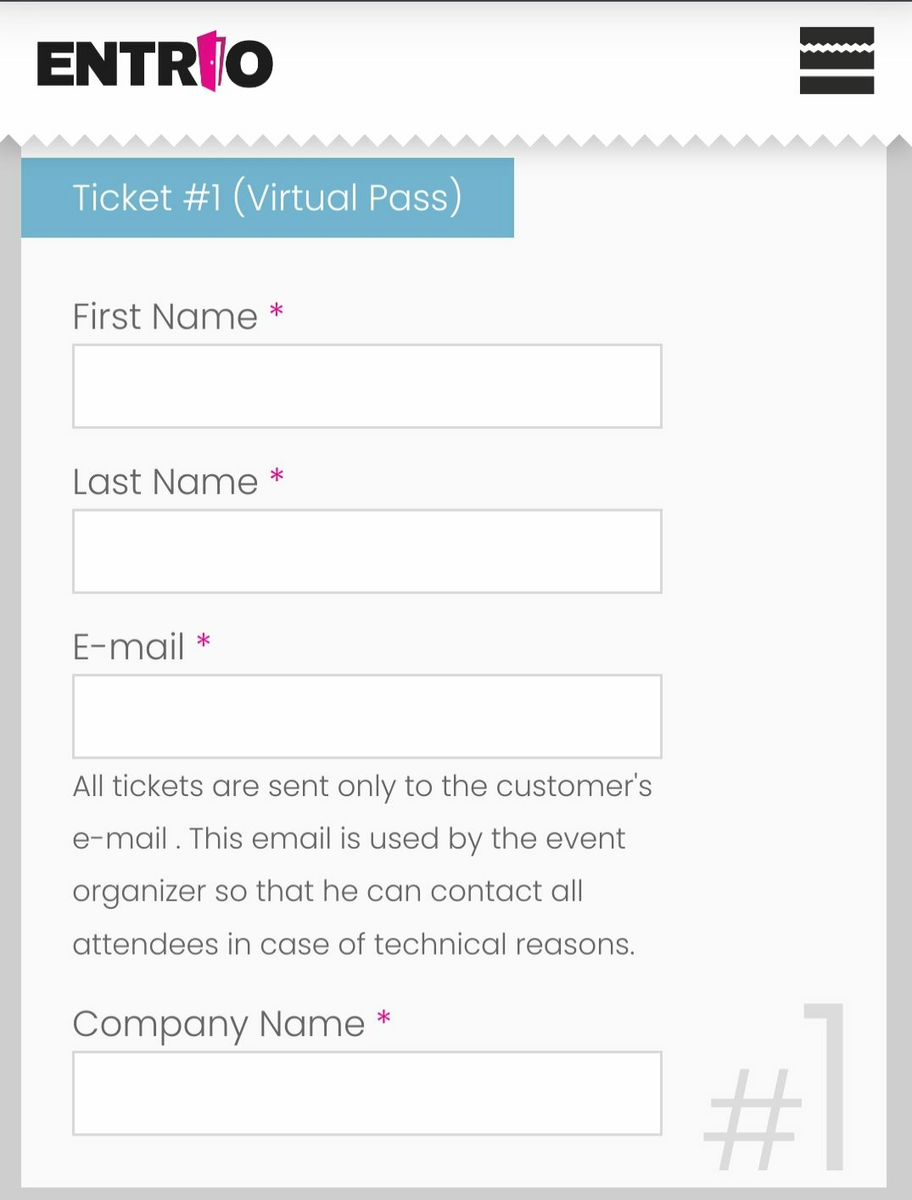
Source: Entrio
If you use online registration software that supports mobile-friendly online registration, you can get various features that allow you to optimize your forms for mobile devices.
For example, your software can automatically redirect users to a mobile-friendly version of your website when it detects they are using a mobile device.
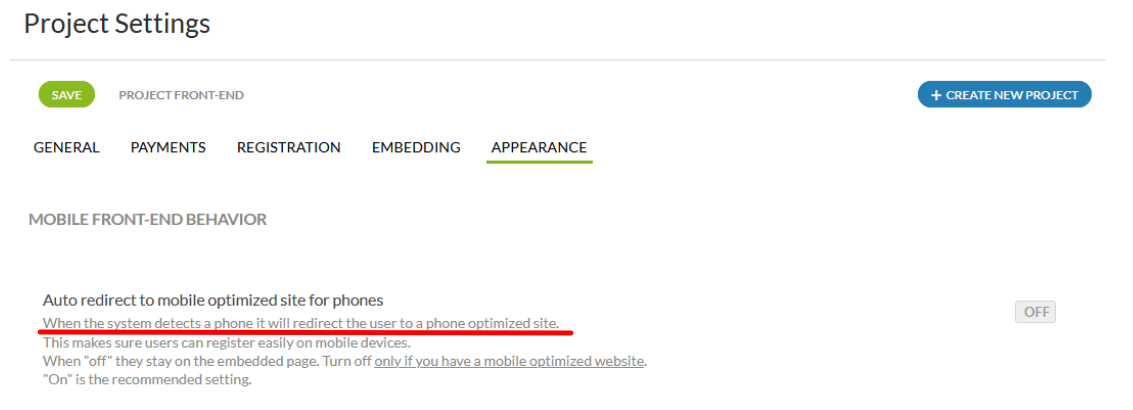
Source: Regpack
That removes one more element to worry about and improves your registration process for the increasing number of customers who want to use their mobile devices when registering on your website.
Automate Communication With Registrants
Communication with people who register for your services, events, activities, or whatever you offer is crucial. However, it can take up a lot of time and effort.
It’s common for applicants to have questions even when they have already filled in and sent a registration form.
Their concerns often don’t end at that point. After all, they gave their money, so they have the right to information.
So, your customers might have various questions about the registration, the next steps in the process, whether their registration even got accepted, etc.
Responding to all of these messages and emails can be tedious and time-consuming.
At the same time, you don’t want to leave your applicants without answers, or they might back out of their registration.
The solution is simple—automated communication.
For example, below, you can see an automated email from Airbnb, sent when someone registers on their platform.
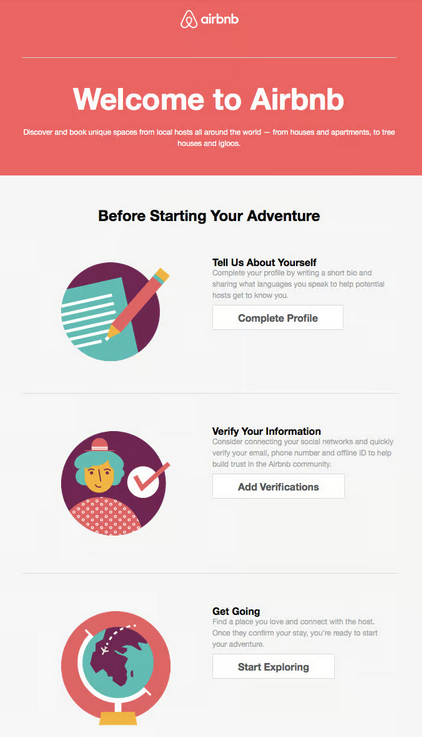
Source: Pipedrive
That email serves multiple purposes all at once.
First, it’s a signal to applicants that their registration was successful.
Second, it gives them clear instructions on the next steps—completing their profile, verifying their personal information, and exploring their possibilities as registered users.
And all of that with a simple automated email.
With great registration software, you can easily set up automated emails like that and send them when a specific condition is met, like a filled registration form, paid installment, etc.
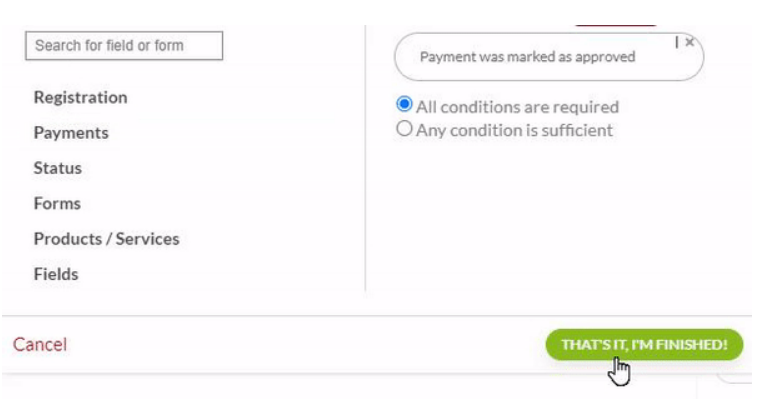
Source: Regpack
In other words, you can set up triggers for sending out prepared emails.
That way, you can automate communication with registrants and provide them with useful information while simultaneously saving time for other tasks.
Conclusion
Online registration needs to be a seamless experience if you want to maximize the potential of your business.
If potential customers give up because your registration process is too complicated or lengthy, isn’t user-friendly, or doesn’t provide them with the possibilities they want, that’s not a good sign.
Luckily, you can fix every issue with your online registration process by following the advice we’ve discussed in this article.
If you do that, your online registrations will become just a simple first step for every customer.


















